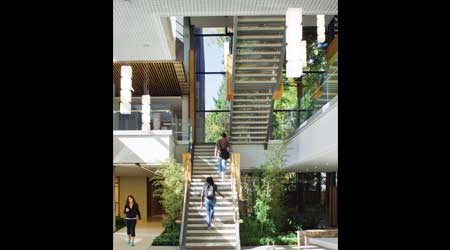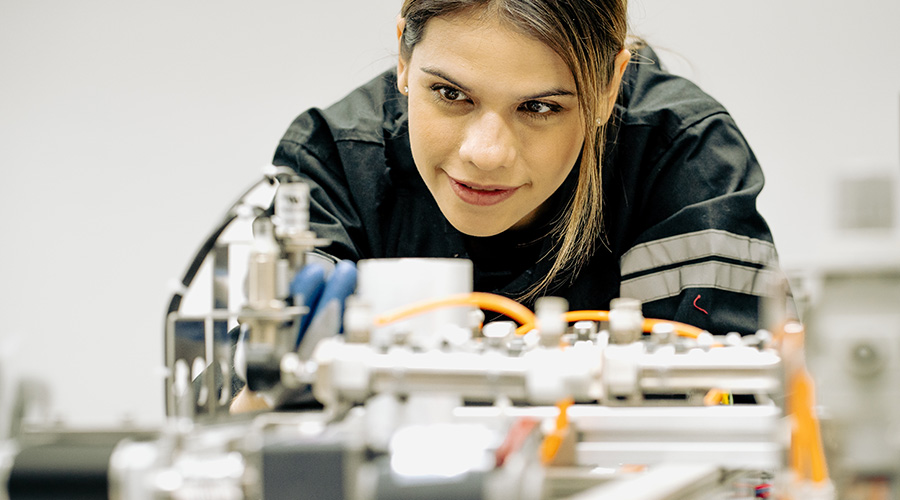 The creative engagement process considers everything from where art fits in to how the space can better serve occupants. Robert Benson Photography
The creative engagement process considers everything from where art fits in to how the space can better serve occupants. Robert Benson Photography7 Steps for Successful Creative Engagement
Creative engagement is a rigorous, collaborative process that joins project teams, facility stakeholders, and end-users for purposes of designing a space.
The process of creative engagement can be broken down into seven basic steps.
First is an invitation to play, extended by the facility manager’s designated leadership group to a diverse team from all levels of an organization. The team is welcomed to participate with full tanks and open minds.
The second step is setting the stage: Letting the team know that everyone’s input is equally important to success and all that’s needed to achieve it. The more voices that are heard on the side of the facility manager’s organization, the more likely the organization will be to create a singular vision later in the process. When the end-users are engaged in even just a single workshop they feel a part of the process and become advocates and supporters of the solution.
For the third and fourth steps, the facility manager’s leadership group must be prepared to break the ice and inspire dialogue — and then make hay with the input. The engagement process starts by asking animating questions — then listening, asking again, listening more, and capturing the ideas. Good questioning helps shift perspectives and reveal a broader view of the challenges. Then the engagement team’s leaders must engage, reframe, and playback the results, which allows the design process to begin. Always working through a lens of opportunity, the design and facility management team looks for sharp edges that need smoothing and easy solutions that need more thinking. The team considers everything from where art fits in to how the design can better serve the person, the community, and the world.
The fifth step is to wash, rinse, and repeat. Behind the scenes, the facility manager’s designated leadership group prepares for this phase by prepping a range of probes and prompts: What if? Can we try? Have we thought of? There is always another way to see a challenge, to connect the dots and spaces in between. What did we learn? How does this fit? In the wash/rinse/repeat process, the leaders distill the workshop input and reflect it back to the group to refine the takeaways. Given time, the right design will always find a way to be found. After this disciplined review of the findings, the next phase is to distill the essence — analyzing and reducing the findings in the proposed design moves that reflect their intent. This is where the work comes together, forming a design that stands apart because it is unique to the facility manager’s organization.
Along the way, the behind-the-scenes leadership group is involved as a champion of the process and provides guidance in the soliciting of input. Involving a wide array of stakeholders requires some shepherding of the outcomes in various phases, according to experts such as Yale University’s office of facilities. A good leader of creative engagement should be able to handle the various twists and turns to ensure the process avoids disappointments and remains orderly and effective, say the facility managers.
The last phase, too often forgotten, is to rejoice. It’s valuable for the facility manager to help celebrate and acknowledge the journey the group has taken and the new places it will allow the facility manager’s organization to go. The conversations — person-to-person, person-to-space, and space-to-community — don’t end at this phase: They evolve for further understanding and continued growth.
Lynn Brotman (lbrotman@svigals.com), IIDA, NCIDQ, is associate principal at Svigals + Partners, an architecture and design firm. Robynne Orr, is a project planner for the Yale University School of Medicine and West Campus for Yale Office of Facilities. Svigals + Partners, working with varied clients including Yale University, developed the creative engagement template presented in this article. Barry Svigals, FAIA, who helped develop the creative engagement method, contributed to this article.
Related Topics:















